Want Hope for the Future? First, Understand the Past
It is often said that those who don’t learn from history are doomed to repeat it. A quick look around the modern world, to examples of economic collapse and rising extremism, seems to confirm this popular adage. The question then arises of how best to learn from history. One tried-and-true method is studying history from the best scholars possible, from those who perform the hard work of research and reconstruction, who make history come alive on the page so that humankind may move forward with a better understanding of the past. The eight books reviewed here do just that. From the brutal battles of the Crusades to the high-tech statecraft of the Cold War, they illuminate political struggles and social progress at different times and places, events both heroic and horrific, yet all revealing universal traits that tie humanity together through the ages. The important and profound lessons found in these pages, rendered through painstaking scholarship, should not be forgotten.
The 1916 Irish Rebellion
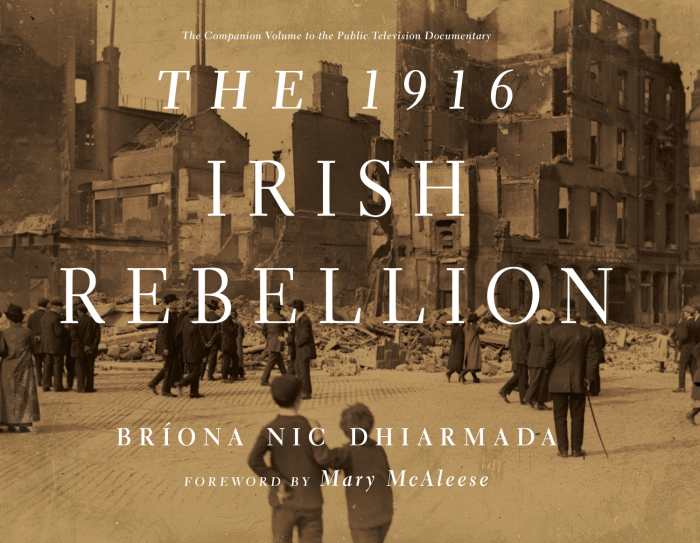
Bríona Nic Dhiarmada
The University of Notre Dame Press
Hardcover $45.00 (240pp)
978-0-268-03614-0
Buy: Local Bookstore (Bookshop), Amazon
This handsome, illustrative volume on the 1916 Irish uprising against the British, a volume worthy of any coffee table, serves as a companion piece to a 2016 public television documentary series produced by the author and narrated by Liam Neeson.
Briona Nic Dhiarmada, a leading Irish studies scholar at the University of Notre Dame, places the complex roots of Irish nationalism and separatist movements into the greater context of anti-imperialist uprisings at the turn of the twentieth century and the fomenting tensions between empires that would ultimately lead to World War I. Deft, concise chapters connect uprisings against the British Empire in Africa and India—and militant Irish thought in America—to a somewhat ragtag group of revolutionaries who would launch an armed rebellion against British forces in Dublin in the spring of 1916.
The 1916 Irish Rebellion recounts the weeklong conflict with novel-like celerity, tracing tactical missteps to eventual rebel defeat and the summary executions of rebel leaders that followed. Witness statements, letters from rebel prisoners, and ballads and poems inspired by the uprising are interspersed throughout the book. These additional features allow the significance of events to be interpreted by those who were actually there and participated, including a young Michael Collins. An impressive array of photographs provides further visual context, showing what urban warfare looked like in early twentieth century Dublin.
The 1916 Irish Rebellion not only provides the social and political basis for modern-day Irish independence, but it convincingly demonstrates how the armed rebellion—though a military failure—had profound repercussions around the world for similar separatist movements. The book is an important testament to the beginning of anticolonial resistance and the beginning of the end of the British Empire.
SCOTT NEUFFER (May 27, 2016)
Martyrs Mirror
A Social History
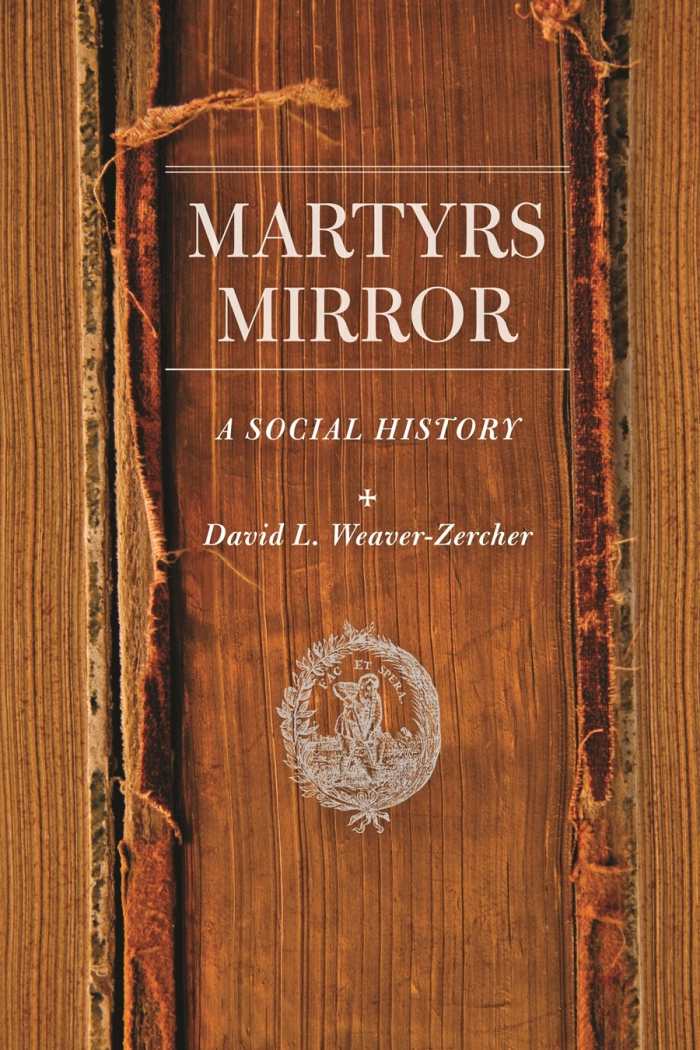
David L. Weaver-Zercher
Johns Hopkins University Press
Hardcover $49.95 (440pp)
978-1-4214-1882-7
Buy: Local Bookstore (Bookshop), Amazon
How sixteenth- and seventeenth-century martyrdom translated into key doctrinal lessons for certain contemporary Christians is what religious scholar David L. Weaver-Zercher tries to understand in his expansive and thought-provoking new work, Martyrs Mirror: A Social History.
The book’s percipient and fascinating analysis of the origins of anabaptism in Europe, including Mennonite and Amish sects, highlights sectarian differences within the Protestant Reformation and how questions of political power shaped and sustained those differences. Nowhere was the anabaptist belief in political nonresistance more exemplified than in the famed seventeenth century martyrology, Martyrs Mirror, which was compiled by Mennonite minister Thieleman van Braght.
This lucid social history follows the various publications, revisions, reprints and translations of that revered text, which, effectively, was a collection of martyr stories and graphic images of persecution, torture, and execution. Central to this new social perspective of the text is the question of how Martyrs Mirror contributed to religious identity and social-political development in both Europe and North America. Indeed, for Mennonites and Amish in the New World, its lessons of self-sacrifice were used to distill Christian principles, but also to preserve tradition in the face of assimilation and secularization.
Perhaps the most interesting findings from this new scholarship are the use of Martyrs Mirror in the twentieth century. Modern interpretations of the text were used to justify increased social activism, including Mennonite protests against the Vietnam War and collaboration with Martin Luther King Jr. in nonviolent civil rights protests. The trajectory of these political beliefs and doctrinal applications evinces the depth of Weaver-Zercher’s research. Martyrs Mirror: A Social History is a significant entry in religious scholarship that deepens our understanding of anabaptism and Christianity in general.
SCOTT NEUFFER (May 27, 2016)
In the Ruins
The 1909 Massacres of Armenians in Adana, Turkey
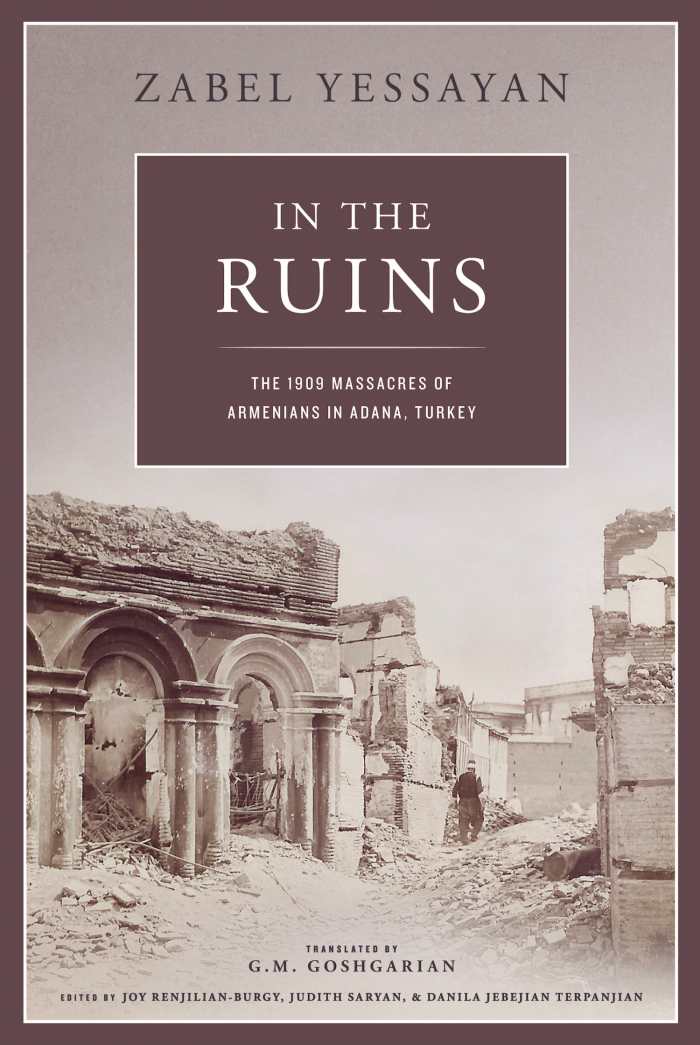
Zabel Yessayan
G.M. Goshgarian, translator
AIWA Press
Softcover $19.50 (262pp)
978-0-9648787-9-2
Buy: Amazon
This unsparing, unflinching, and darkly poetic account of the 1909 massacre of 30,000 Armenians in Adana, Turkey, makes Joseph Conrad’s Heart of Darkness seem like leisure reading. That’s because Zabel Yessayan, one of the most important Armenian woman writers of the modern era, is relentless in capturing every horrid detail of genocide: every burnt building, every blood-streaked field, and every broken and whimpering face of those who survived the massacre.
In the Ruins reads like a travelogue as the author ventures across the threshold of civility into ruins of incomprehensible brutality. Part of a humanitarian envoy, she tries her best to comfort orphans, prisoners, and invalids, struggling with her own depression and an overwhelming sense of grief. Combining journalistic observations with poetic and philosophical reflections, the book has been credited with creating a new genre called “testimony literature.” It both records historical events and gives voice and identity to a decimated race of people. That voice and identity don’t negate the “crimson nightmare” of ethnic cleansing, but they offer hope and solidarity for survivors. Emerging throughout these lurid chapters is what Yessayan describes as the “untiring, unconscious genius for rebirth.”
The first-person format also provides a prescient and harrowing perspective on post-traumatic stress disorder. Unlike drier, more clinical accounts of PTSD, the vivid prose depicts victims’ emotions with heart-wrenching detail, revealing the maddening effects of violence on the human psyche, especially on children.
This new English translation of In the Ruins, equipped with grisly photos, couldn’t be timelier. While it calls attention to past atrocities—prophetically speaking to the later genocidal horrors of the twentieth century—it reminds all present-day readers of the potential violence and barbarity simmering beneath racial and ethnic tensions.
SCOTT NEUFFER (May 27, 2016)
Saladin
The Sultan Who Vanquished the Crusaders and Built an Islamic Empire
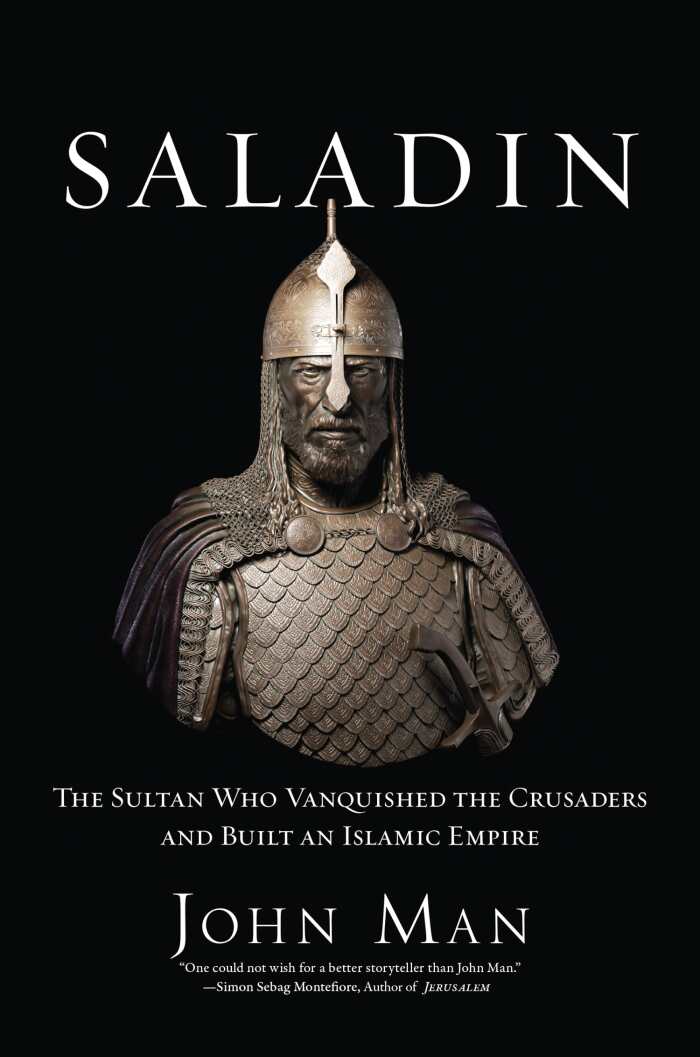
John Man
Da Capo Press
Hardcover $26.99 (312pp)
978-0-306-82487-6
Buy: Local Bookstore (Bookshop), Amazon
With the character depth and literary finesse of a novelist, bestselling historian and travel writer John Man portrays the life of renowned twelfth-century sultan Saladin, who united Muslim kingdoms against Christian crusaders to retake the holy city of Jerusalem.
Saladin is much more than a character study, however. As expected, the battle chapters are riveting and full of medieval heroics. But in building the foundation of this larger-than-life historical figure and the conflicts that defined his reign, the book necessarily explores the Muslim Sunni-Shia split and larger religious sectarianism plaguing the Middle East during the Crusades. Parallels are astutely drawn to present-day sectarian strife and civil war, allowing for some insightful commentary. Though medieval battles were barbaric by today’s standards, medieval politics were infinitely complex and nuanced. The power struggles Saladin faced, the betrayals and reversals, read like modern political dramas.
As a character study, Saladin does more than describe the events of its hero’s life. It cracks the nut of his psychology, discovering qualities of ambition and fierceness, yes, but also magnanimity and generosity. The later chapters demonstrate how these leadership qualities gave Saladin an advantage against the Crusaders, who could be ruthless, reckless, and greedy. Not only did the sultan become a hero to his people—still honored and imitated by Islamic leaders—but he garnered respect and admiration from his enemies that eventually led to folklore and legends of his heroic feats.
Saladin is a worthy biography of an important Muslim hero; yet it reaches beyond one personality to examine religious currents and cultural conflicts as relevant today as they were 800 years ago.
SCOTT NEUFFER (May 27, 2016)
Eyeing the Red Storm
Eisenhower and the First Attempt to Build a Spy Satellite
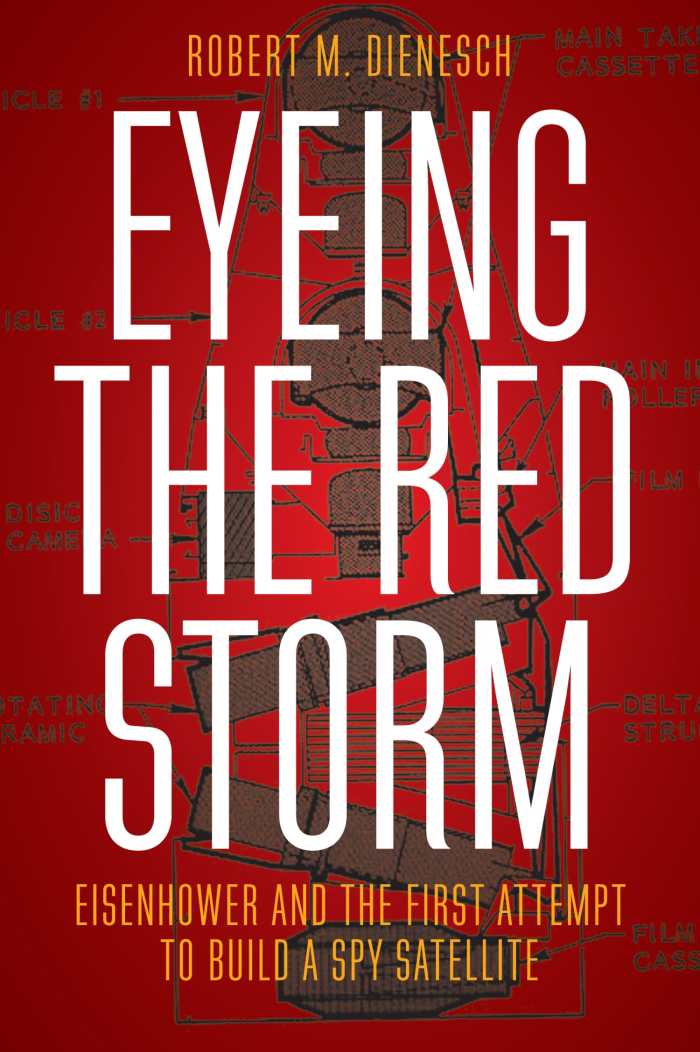
Robert M. Dienesch
University of Nebraska Press
Hardcover $34.95 (296pp)
978-0-8032-5572-2
Buy: Local Bookstore (Bookshop), Amazon
Historian Robert M. Dienesch’s latest work is an intriguing and incisive study of the transformational period in American history when the federal government retooled defense spending and foreign policy toward communist containment and nuclear deterrence.
Eyeing the Red Storm meticulously delineates Cold War policy under the Eisenhower presidency and the development of the first satellite spy program, which, technically a failure, produced future successes. Particular attention is given to the birth of the military-industrial complex and how different military branches and their lobbyists exaggerated the Soviet threat to pressure the president for more funding. The book effectively argues that development of a spy satellite program was just as much a response to potential Soviet aggression as it was to an overzealous American military straining the domestic economy with funding requests. Eisenhower desired clarity and developed spy programs to have a better picture of Soviet activity as opposed to the dire predictions of his generals; he was haunted by both the specter of nuclear war and the specter of federal insolvency.
The relationship between outer space and a growing national intelligence apparatus is also elucidated. Tapping the best scientific minds in academia and the private sector, Eisenhower developed a satellite program that would serve as a prototype for future reconnaissance technology and accelerate the space race with the Soviet Union. Expertly curated and cited, the chapters reveal the incredible amount of collaboration that produced such a program. Of note are geniuses and entrepreneurs like Edwin Land, creator of the Polaroid Corporation, who helped develop the U-2 spy plane.
The technical minutiae covered in Eyeing the Red Storm don’t preclude a greater sense of intrigue. The book puts readers into the middle of the Cold War, when two superpowers were reading and reacting to each other somewhat blindly. As Dienesch emphasizes more than once, the stakes in this spy game were no less than civilization itself, for both sides had developed enough nuclear weapons to annihilate humankind.
SCOTT NEUFFER (May 27, 2016)
The French Resistance
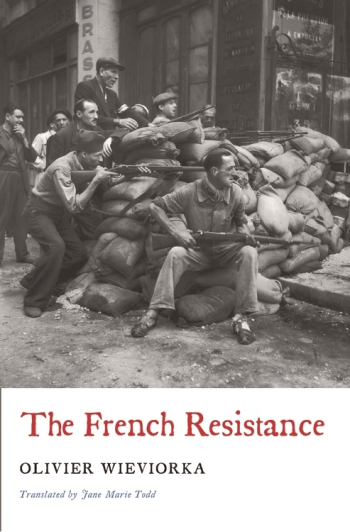
Olivier Wieviorka
Jane Marie Todd, translator
Harvard University Press
Hardcover $39.95 (592pp)
978-0-674-73122-6
Buy: Local Bookstore (Bookshop), Amazon
The new English translation of Oliver Wieviorka’s The French Resistance is a hefty, commodious volume allowing for the full breadth of the author’s sophisticated scholarship.
This is not a one-sided account of the French resistance during World War II, when France was divided between the Nazi-occupied north and the collaborationist Vichy regime of the south. The book goes to great lengths to evince the limitations of Charles de Gaulle’s Free France campaign. Though de Gaulle and the Allies played an important role in the resistance from the outside, the extensive and expertly chronicled chapters here focus on resistance efforts within the country itself that included underground communications, reconnaissance, and acts of sabotage.
Political alliances were never as clear as other historians have made out, the book maintains. On an ideological level, groups as diverse as Christian democrats, nationalist republicans, communists, and socialists found themselves strangely aligned in a common struggle against fascism. Furthermore, the spirit of resistance changed from individual to individual depending on one’s nationalistic and humanistic ideals, resulting in a collective movement that was protean and multifaceted rather than simply idealistic and heroic. A chapter on the treatment of Jews during the occupation, for instance, shows that some resistance groups accommodated anti-Semitism for strategic purposes.
The book’s layered perspectives stem from the author’s nuanced style and the intricate translation by Jane Marie Todd. The prose is often meta-historical, philosophizing on the nature of historiography while concurrently relaying historical facts. Wieviorka exhibits the sharp, penetrating mind of a social theorist, calling any cursory classification of the resistance arbitrary, and warning that even “the same doctrinal foundations could lead to opposing engagements.” Informative as well as intellectually stimulating, The French Resistance is a must-read for Francophiles and history buffs.
SCOTT NEUFFER (May 27, 2016)
In the Land of a Thousand Gods
A History of Asia Minor in the Ancient World
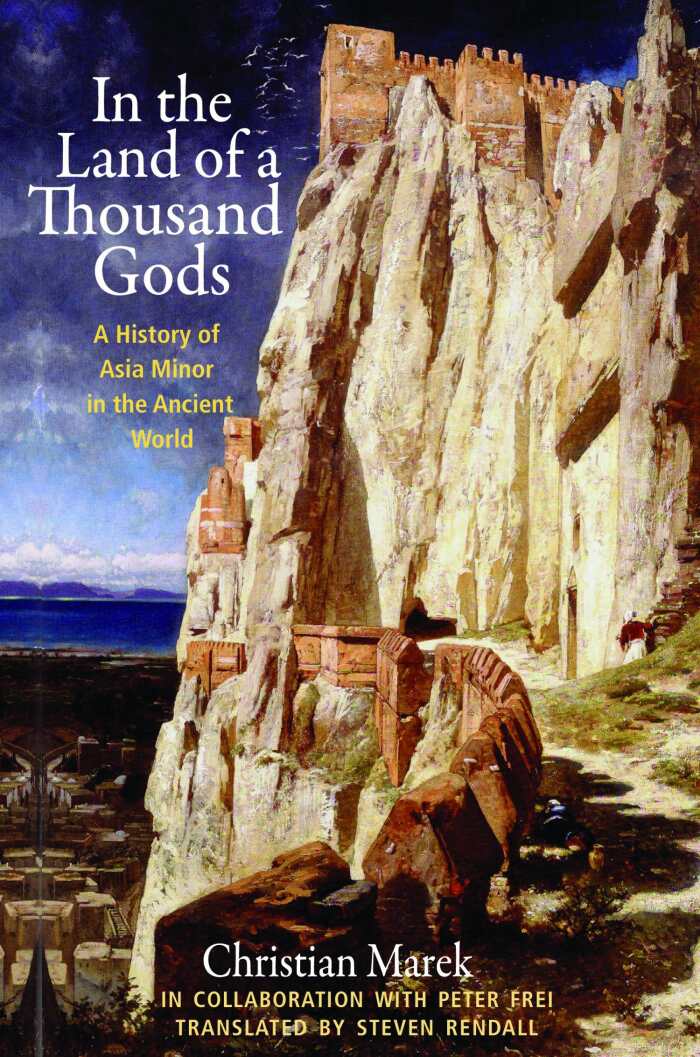
Christian Marek
Princeton University Press
Hardcover $49.50 (824pp)
978-0-691-15979-9
Buy: Amazon
In the introduction to this new English translation of In the Land of a Thousand Gods, ancient history expert Christian Marek teases that because of its largeness and cultural diversity, ancient Asia Minor could never be comprehensively covered in one volume—ironic, because Marek gets close. This is a humongous, wide-ranging, yet thoughtfully organized and amply illustrated handbook on ancient Asia Minor, that peninsular land that is now modern-day Turkey.
The book views the geographic area as a land bridge connecting the Occident to the Orient, its history a melting pot of various cultures and waxing/waning cities. The lush chapters begin with prehistoric times and proceed through the Stone Age, the Bronze Age, the Persian Empire, Hellenization, and finally the establishment of Constantinople (present-day Istanbul) under imperial Rome. The best passages explore famous mysteries, like the legendary city of Troy, and illuminate the Anatolian roots of classical art, literature, and science. For example, Herodotus, “the Homer of history,” was born in Asia Minor to a Carian-Greek family, his work representing the synthesis of Greek and Middle Eastern cultures.
The book’s title is especially fitting; prominently examined are manifold cosmologies and deities that guided and differentiated Anatolia’s melting-pot civilizations. Readers interested in the spiritual will be pleased with a heady mélange of sun gods and wine gods and temples and altars. The chronological chapters reveal how the mysterious cults and iconography of vanishing peoples were integrated into larger empires and emergent monotheistic theologies like Christianity. In the Land of a Thousand Gods limns these mythic-religious transformations in glorious detail, both with fastidious prose and resplendent pictures. It is an indispensable guide for anyone interested in Asia Minor and in the broader cultural exchange between East and West.
SCOTT NEUFFER (May 27, 2016)
From Furs to Farms
The Transformation of the Mississippi Valley, 1762–1825

John Reda
North Illinois University Press
Hardcover $38.00 (212pp)
978-0-87580-499-6
Buy: Local Bookstore (Bookshop), Amazon
John Reda’s relatively succinct and pointed history of the white settlement of the Mississippi Valley challenges the oversimplified and convenient notion of Manifest Destiny.
Before the American Revolution, before the crowded and violent land rush of westward expansion, the “Illinois Country” of the Upper Mississippi River—what are now the states of Missouri and Illinois—was populated by several Native American tribes that existed in relative harmony with foreign traders. From Furs to Farms effectively paints a picture not of an idyllic and empty frontier waiting to be subdued, but of a bustling, multiracial, multicultural international boundary economically bound by the powerful fur trade. After the Louisiana Purchase of 1803, however, the Mississippi Valley economy was slowly re-geared toward agriculture as white American settlers sought to take advantage of the area’s rich riparian bottomlands.
The transition was not beneficial for all. As the book unequivocally clarifies, the expansion of American sovereignty went hand-in-hand with white supremacy. Not only did the issue of slavery complicate the statehoods of Missouri and Illinois, but past diplomacy and treaties with Native Americans were eschewed in favor of “Indian removal,” both through continued violence and through the mass relocation of tribes that would take place in the Jackson presidency.
Like the work of all diligent, mindful scholars, Reda’s account of history is complex. Readers are reacquainted with intrepid American legends like Lewis and Clark, yet, at the same time, are reminded that the Manifest Destiny of a nascent empire cost other people their homeland and freedom. As Reda points out, these political and ideological incongruities would break open in the Civil War and persist well into the following century. From Furs to Farms is a consequential read that aids our understanding of America’s mighty yet contradictory legacy.
SCOTT NEUFFER (May 27, 2016)
Scott Neuffer

